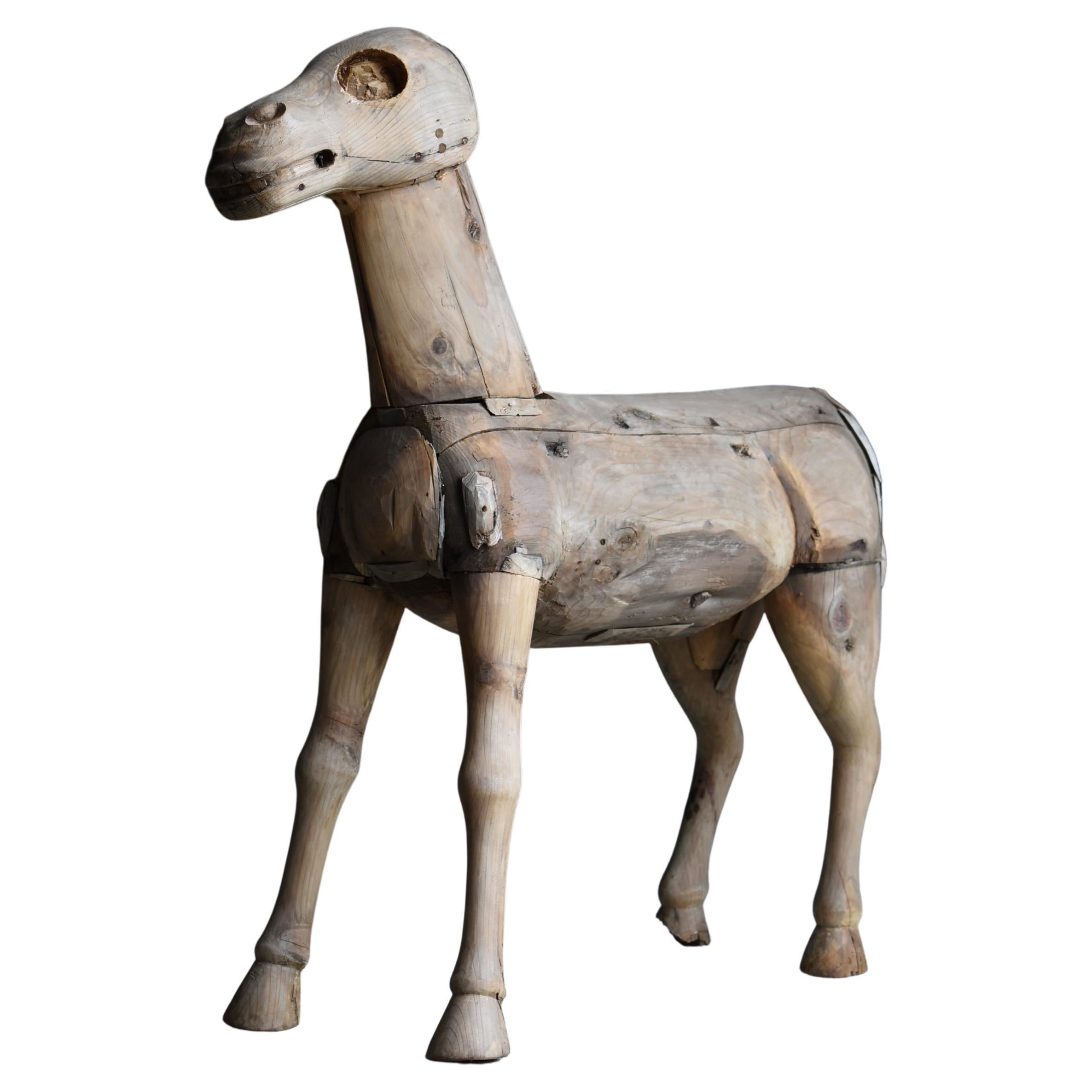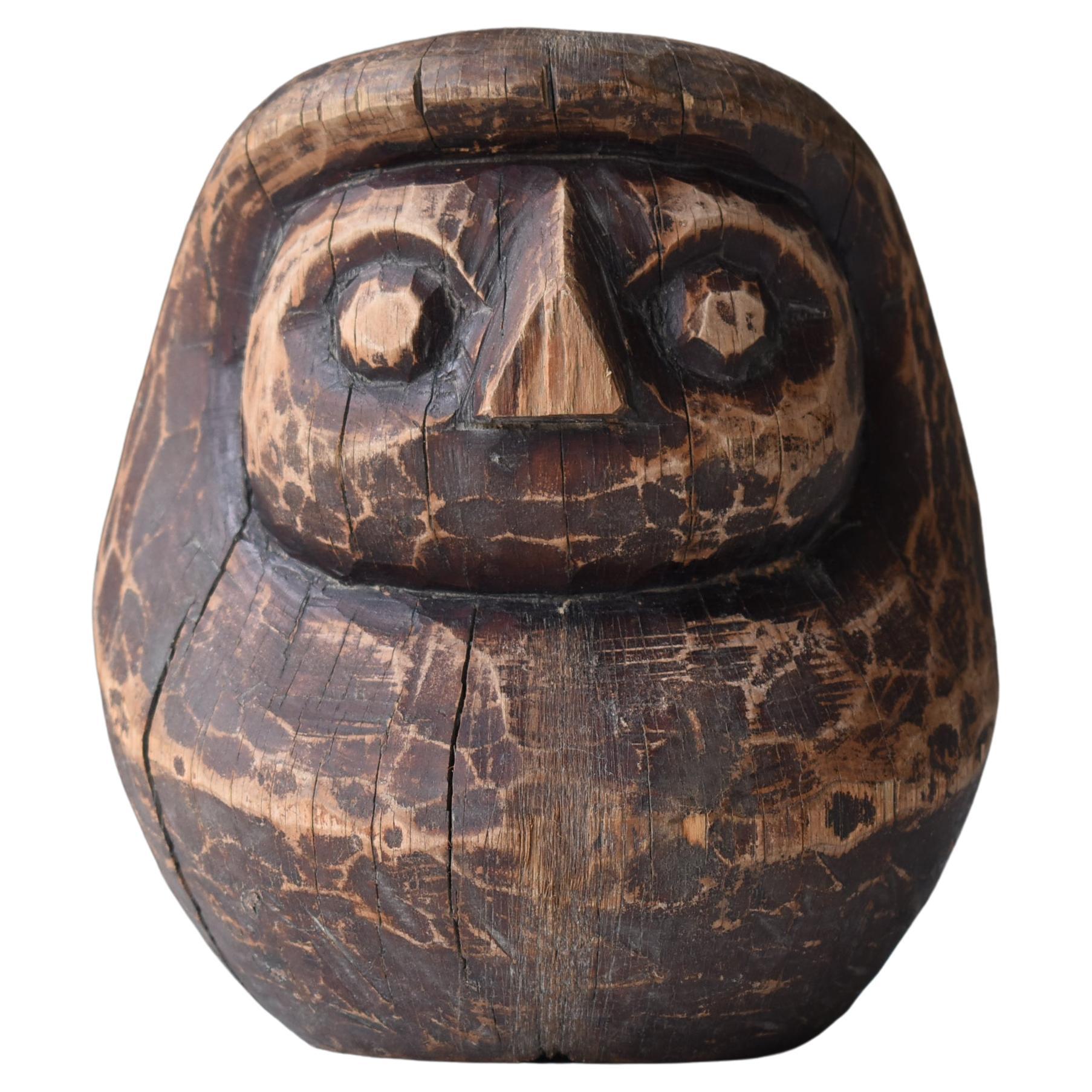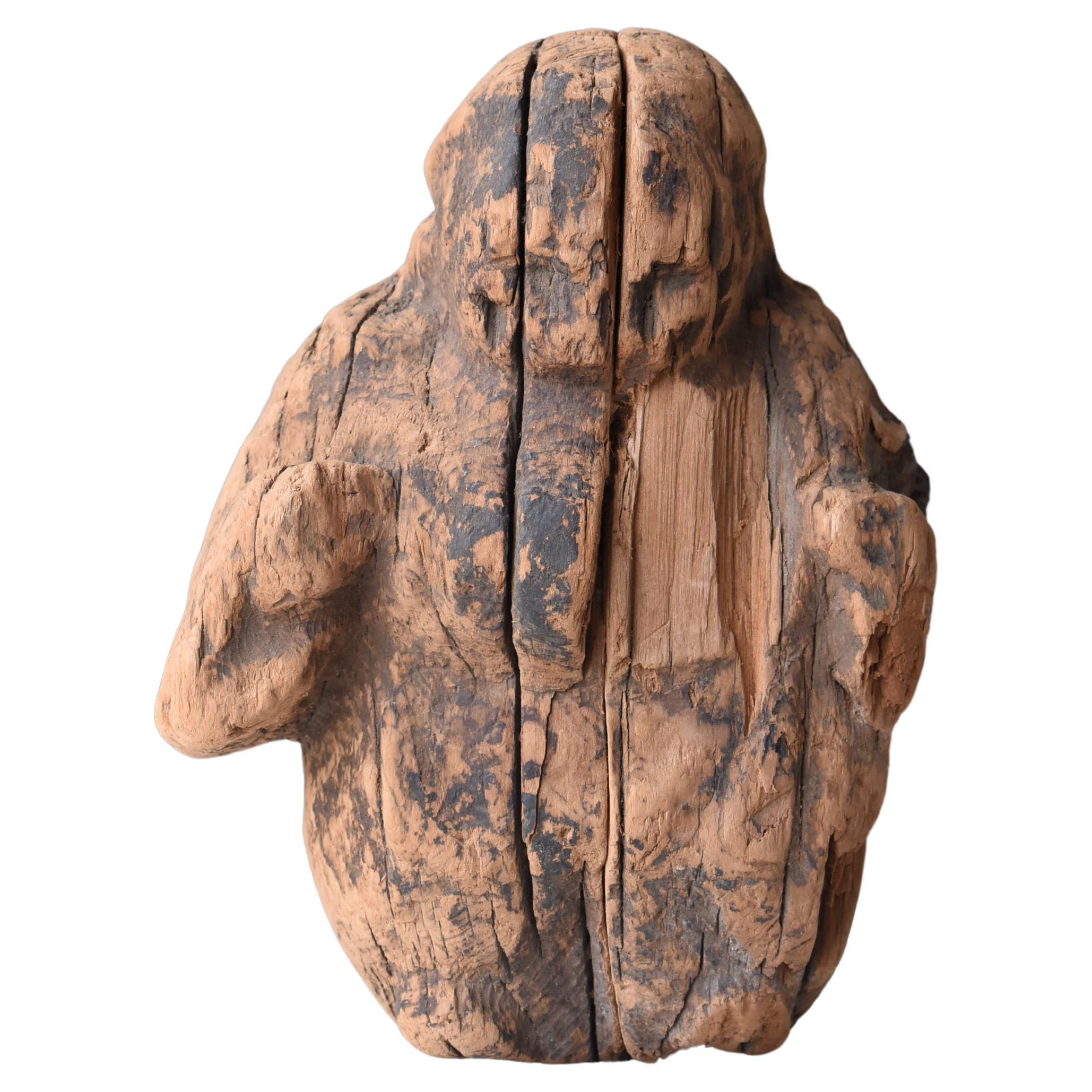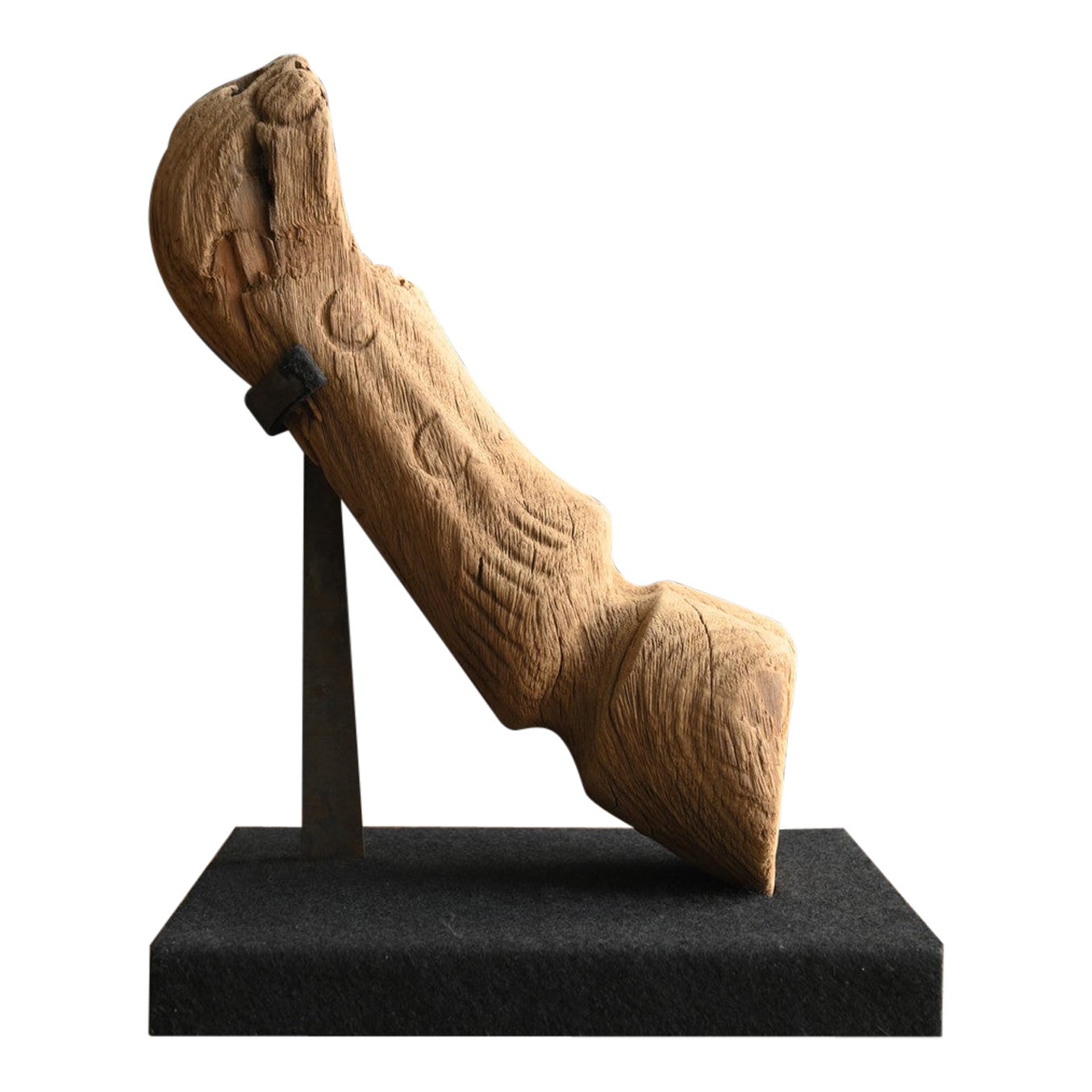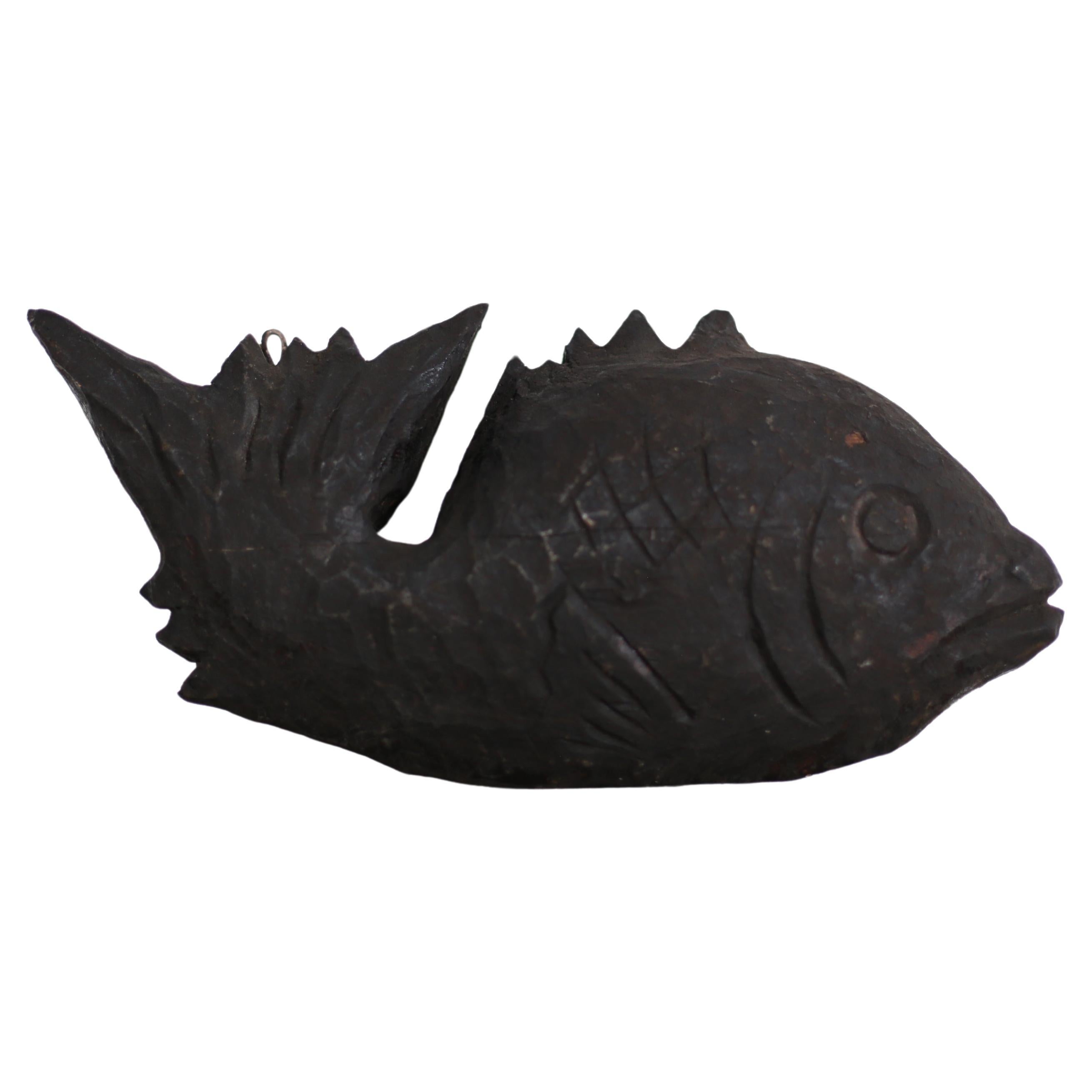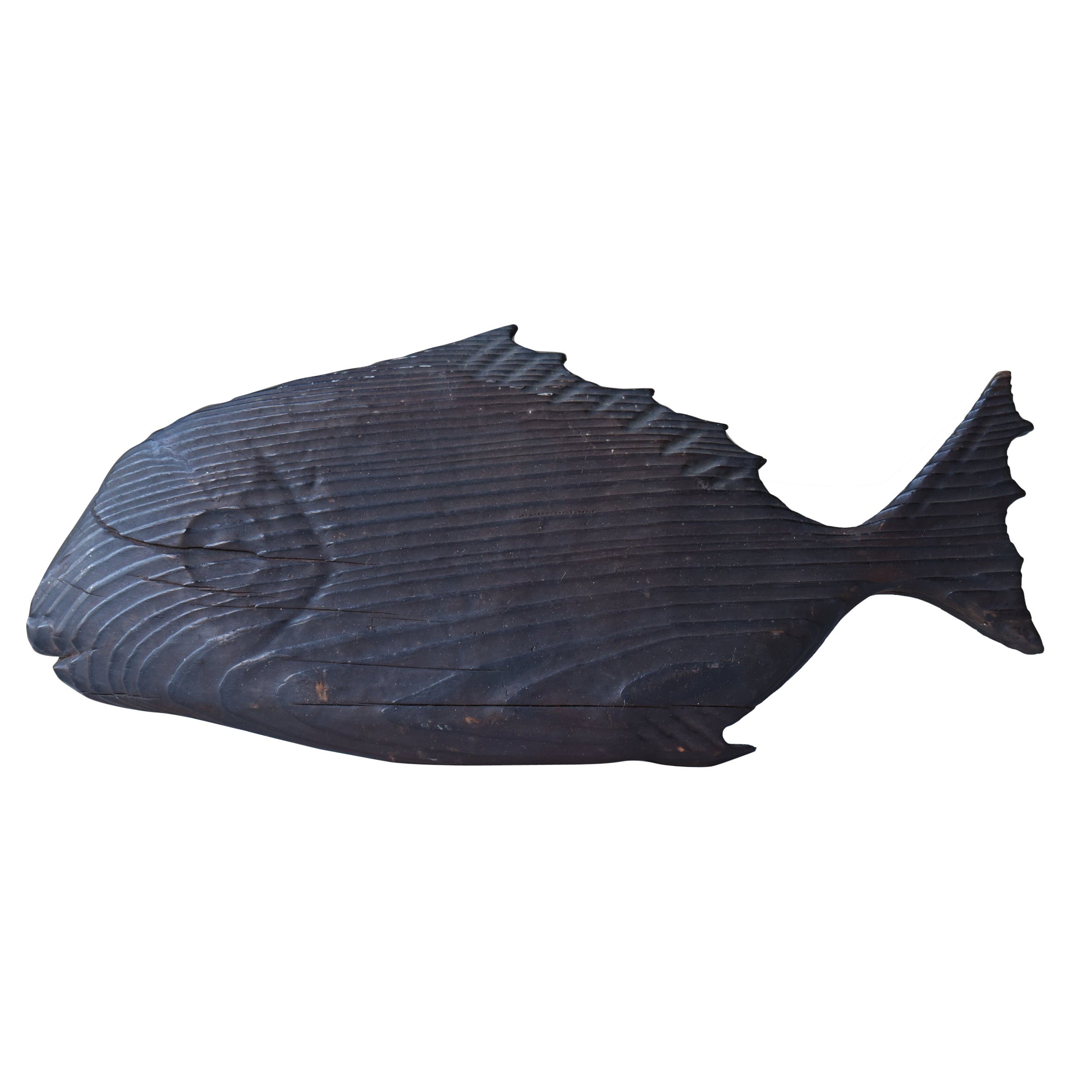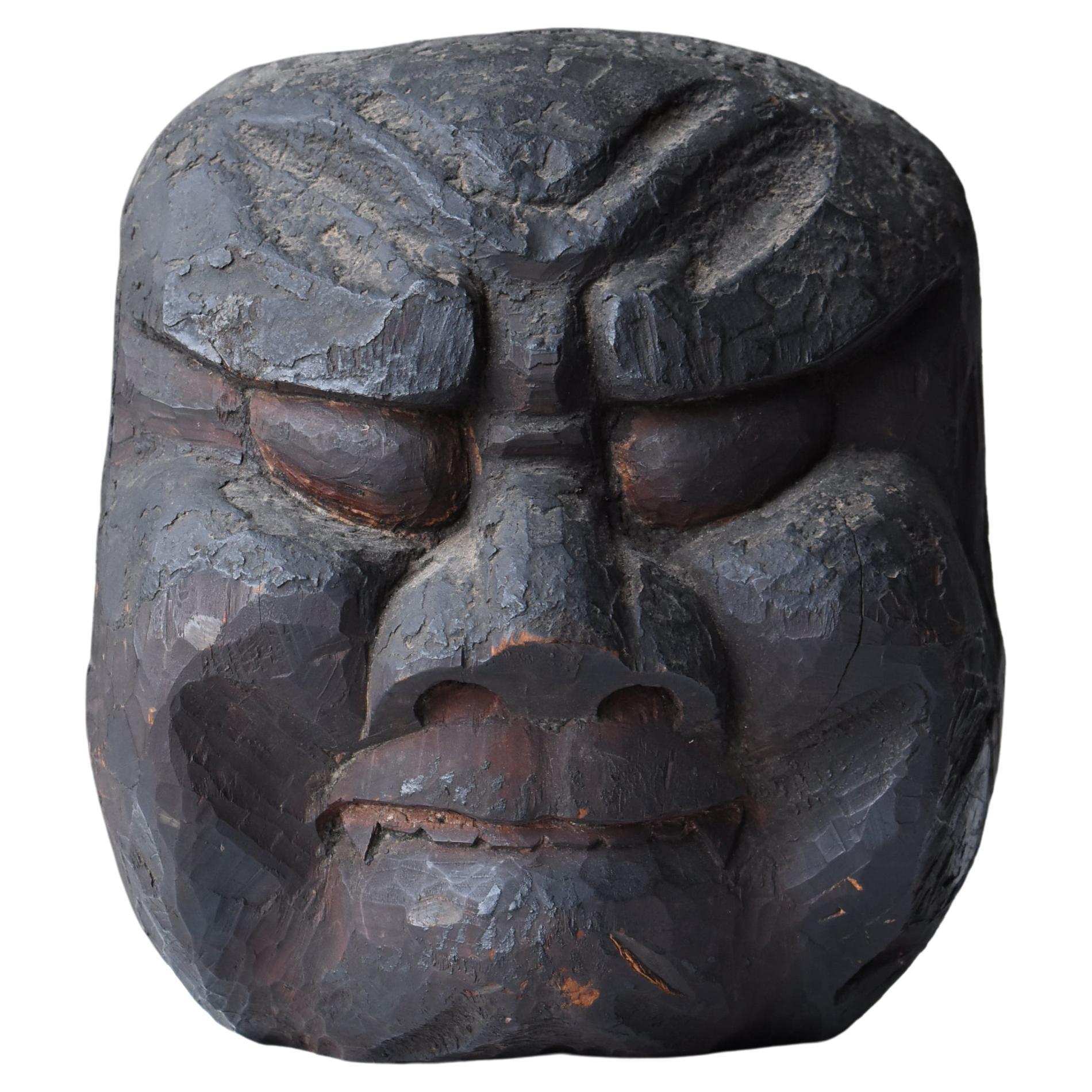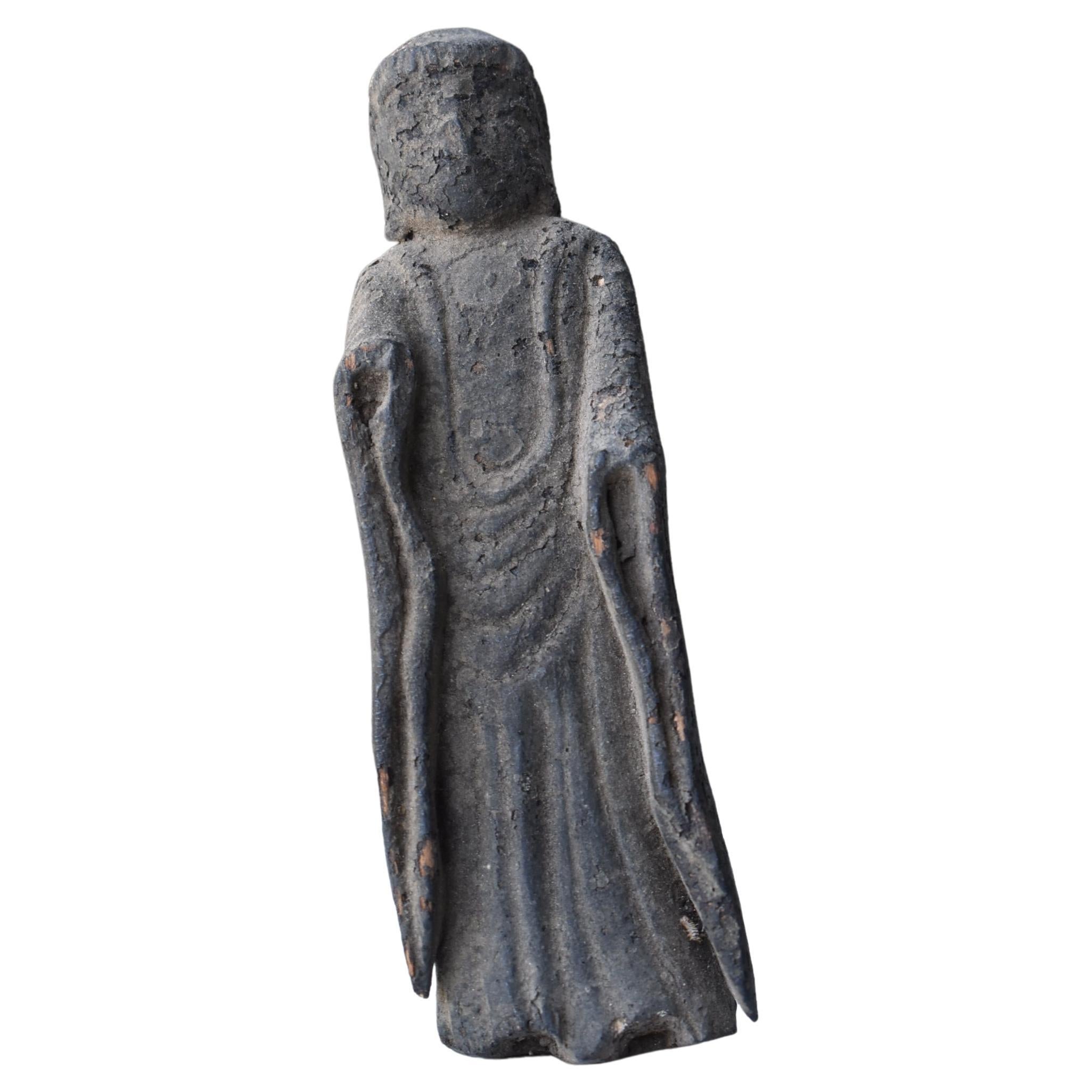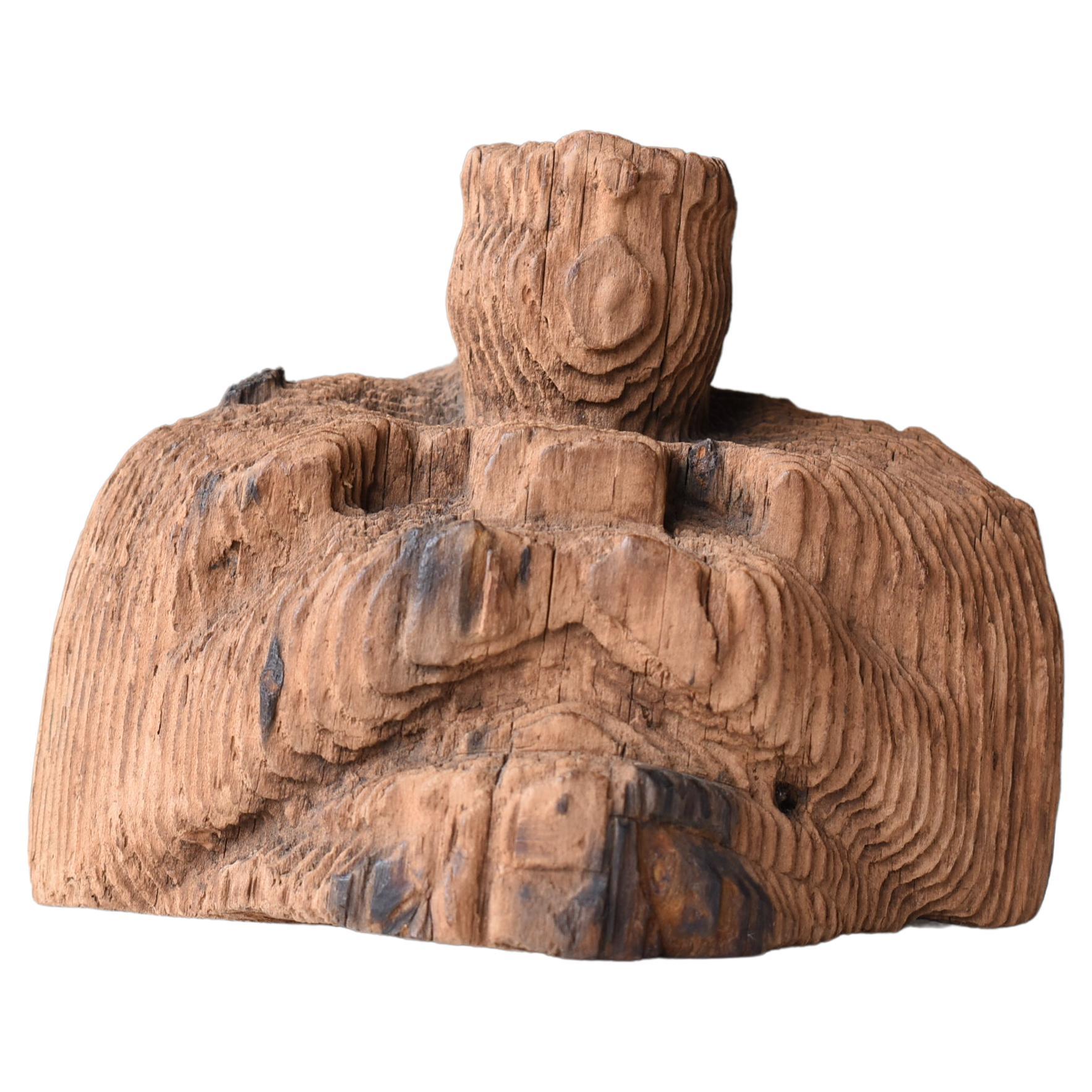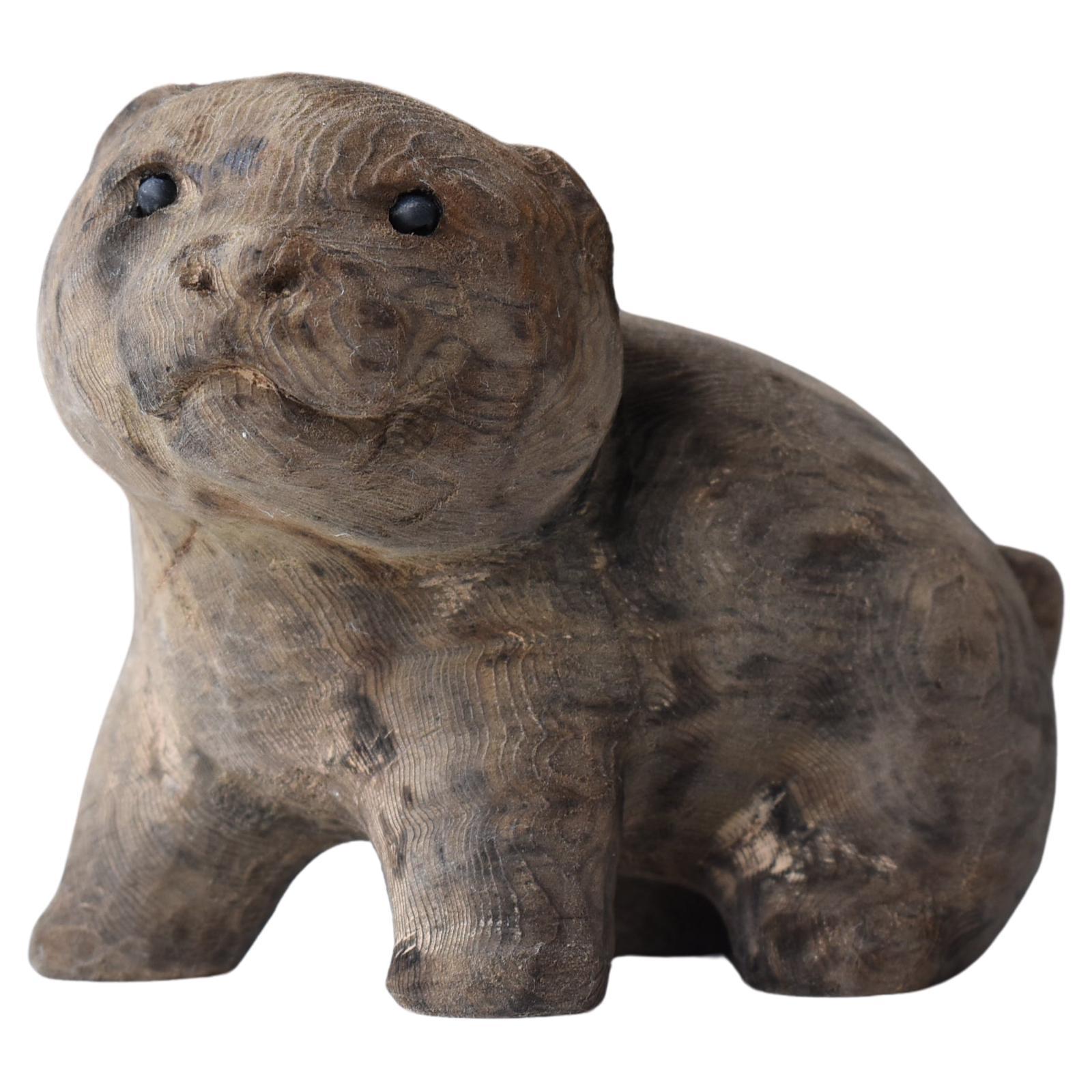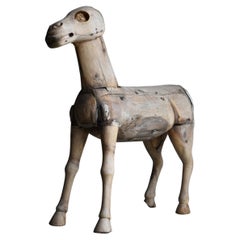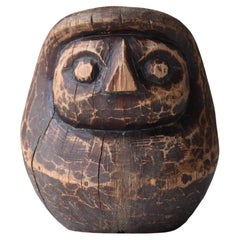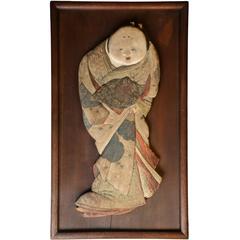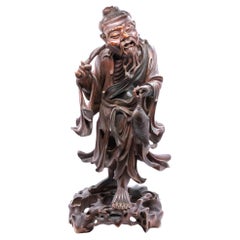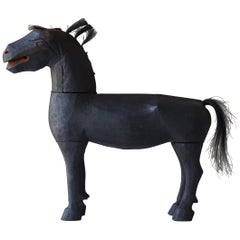
Japanese Old Wood Carving Horse 1800s-1900s/Antique Sculpture Folk Art Wabisabi
View Similar Items
Want more images or videos?
Request additional images or videos from the seller
1 of 17
Japanese Old Wood Carving Horse 1800s-1900s/Antique Sculpture Folk Art Wabisabi
About the Item
- Dimensions:Height: 13.78 in (35 cm)Width: 16.15 in (41 cm)Depth: 3.94 in (10 cm)
- Style:Edo (Of the Period)
- Materials and Techniques:
- Place of Origin:
- Period:
- Date of Manufacture:1800s-1900s
- Condition:
- Seller Location:Sammu-shi, JP
- Reference Number:1stDibs: LU5487223494172
About the Seller
5.0
Platinum Seller
These expertly vetted sellers are 1stDibs' most experienced sellers and are rated highest by our customers.
Established in 2015
1stDibs seller since 2020
1,105 sales on 1stDibs
Typical response time: 4 hours
More From This SellerView All
- Japanese Antique Wood Carving Large Horse 1800s-1860s / Sculpture WabisabiLocated in Sammu-shi, ChibaVery old Japanese large wooden carving of a horse. It dates from the Edo period (1800s-1860s). It is made of cedar wood. In Japan, there is ...Category
Antique Late 19th Century Japanese Edo Sculptures and Carvings
MaterialsCedar
- Japanese Antique Wood Carving Daruma 1860s-1900s / Sculpture Mingei WabisabiLocated in Sammu-shi, ChibaVery old Japanese wooden Daruma doll. It was made during the Meiji period (1860s-1900s). The material is cedar wood. This wooden mould is the prototype of the Daruma doll. Many Daruma dolls were mass-produced using this wooden form...Category
Early 20th Century Japanese Meiji Sculptures and Carvings
MaterialsCedar
- Japanese Antique Wood Carving Turtle 1800s-1860s/Folk Crafts Object MingeiLocated in Sammu-shi, ChibaThis is a very old Japanese carved wooden turtle. This item is from the Edo period (1800s-1860s). It is made of cedar wood. Very rare item. Turtles have...Category
Antique Late 19th Century Japanese Edo Sculptures and Carvings
MaterialsCedar
- Japanese Antique Wood Carving「Daikokuten」1860s-1900s / Figurine Mingei WabisabiLocated in Sammu-shi, ChibaThis is a very old Japanese wooden statue. It is from the Meiji era. (1860s-1900s). It appears to be made of cedar wood. It is called "Daikokut...Category
Early 20th Century Japanese Meiji Sculptures and Carvings
MaterialsCedar
- Japanese Antique Black Daruma 1860s-1900s / Wood Carving Figurine WabisabiLocated in Sammu-shi, ChibaThis is a very old wooden black Daruma doll. It was made in the Meiji period (1860s-1900s). The material is cedar wood. This wooden form is the original D...Category
Early 20th Century Japanese Meiji Sculptures and Carvings
MaterialsCedar
- Japanese Antique Wood Carving Fish 1860s-1900s / Mingei Figurine Object WabisabiLocated in Sammu-shi, ChibaThis is a very old Japanese wood carving of a fish. It is a wood carving from the Meiji period (1860s-1900s). It is carved from cedar wood. This wood carving is attached to a free h...Category
Early 20th Century Japanese Meiji Sculptures and Carvings
MaterialsCedar
You May Also Like
- Japanese Erotic Otofuku Folk Art Carving, Late Meiji Period, circa 1900Located in Prahran, VictoriaRare and highly unusual Japanese Folk Art wood carving depicting the folk heroine and good luck figure Otafuku with a finely painted erotic design on the interior and a carved inscri...Category
Early 20th Century Japanese Meiji Sculptures and Carvings
MaterialsCypress
- Wood Carving SculptureLocated in Dallas, TXThis wood carving sculpture origins from China, circa 1880.Category
Antique 19th Century Chinese Sculptures and Carvings
MaterialsWood
- Japan 1890 Meiji Period Ebisu Sculpture in Wood Carving of an Old FishermanLocated in Miami, FLAn extremely well detailed wood carving of Ebisu, as a fisherman. Beautiful and well detailed sculpture, created in Japan during the Meiji dynastic period (1868-1912) back in the 1890's. This piece represent the god of good fortune Ebisu. Was exceptionally carved and executed from one solid single piece of rose wood, showing a gorgeous face expression, with intricate details in the hands and feets, he's carrying as usual a rod and a fish. Ebisu (yebisu), ???, god of fortune, the ocean and fisherman. In the japanese mythology is one of the seven gods of luck, sichi-fuku-jin, the patron of the fisherman and tradesmen. he is depicted as a bearded, smiling fisherman with formal long court ropes, often carrying a rod in one hand and a tai, symbolic fish of the good luck, in the other. The height is 14.25 inches (36.20 cm) and the base measurements is 6.5 by 6.45 inches (16.5 x 16.38 cm). Meiji period, is an era of Japanese history that extended from October 23, 1868 to July 30, 1912.The Meiji era was the first half of the Empire of Japan, when the Japanese people moved from being an isolated feudal society at risk of colonization by Western powers to the new paradigm of a modern, industrialized nation state and emergent great power, influenced by Western scientific, technological, philosophical, political, legal, and aesthetic ideas. As a result of such wholesale adoption of radically different ideas, the changes to Japan were profound, and affected its social structure, internal politics, economy, military, and foreign...Category
Antique 1890s Japanese Meiji Sculptures and Carvings
MaterialsWood
$1,320 Sale Price20% Off - Japanese Edo Period Wood Temple Carving with DovesLocated in New York, NYJapanese Edo period wooden temple carving with two doves in branches. The scene is set into a frame that suggests the piece having been initially part o...Category
Antique 17th Century Japanese Edo Sculptures and Carvings
MaterialsWood
- Near Pair of Japanese Jizai Kagi Wood Koi Folk Art SculpturesLocated in Atlanta, GAA near pair of wood koi fish from Japan circa 1860-90s of late Meiji Period. Hand-carved from solid wood, these sculptures are known as Jizai Kagi in Japane...Category
Antique Late 19th Century Japanese Folk Art Sculptures and Carvings
MaterialsIron
- Rare Old Himalayan Tibetan Carved Wood Folk art figure Tribal Art Asian AntiquesLocated in London, GBA rare and interesting old Himalayan / Tibetan folk art figure of a soldier or warrior. The standing figure with large Avian embellished headdress with bandolier and holding a sword,...Category
Early 20th Century Tibetan Tribal Art
MaterialsWood

